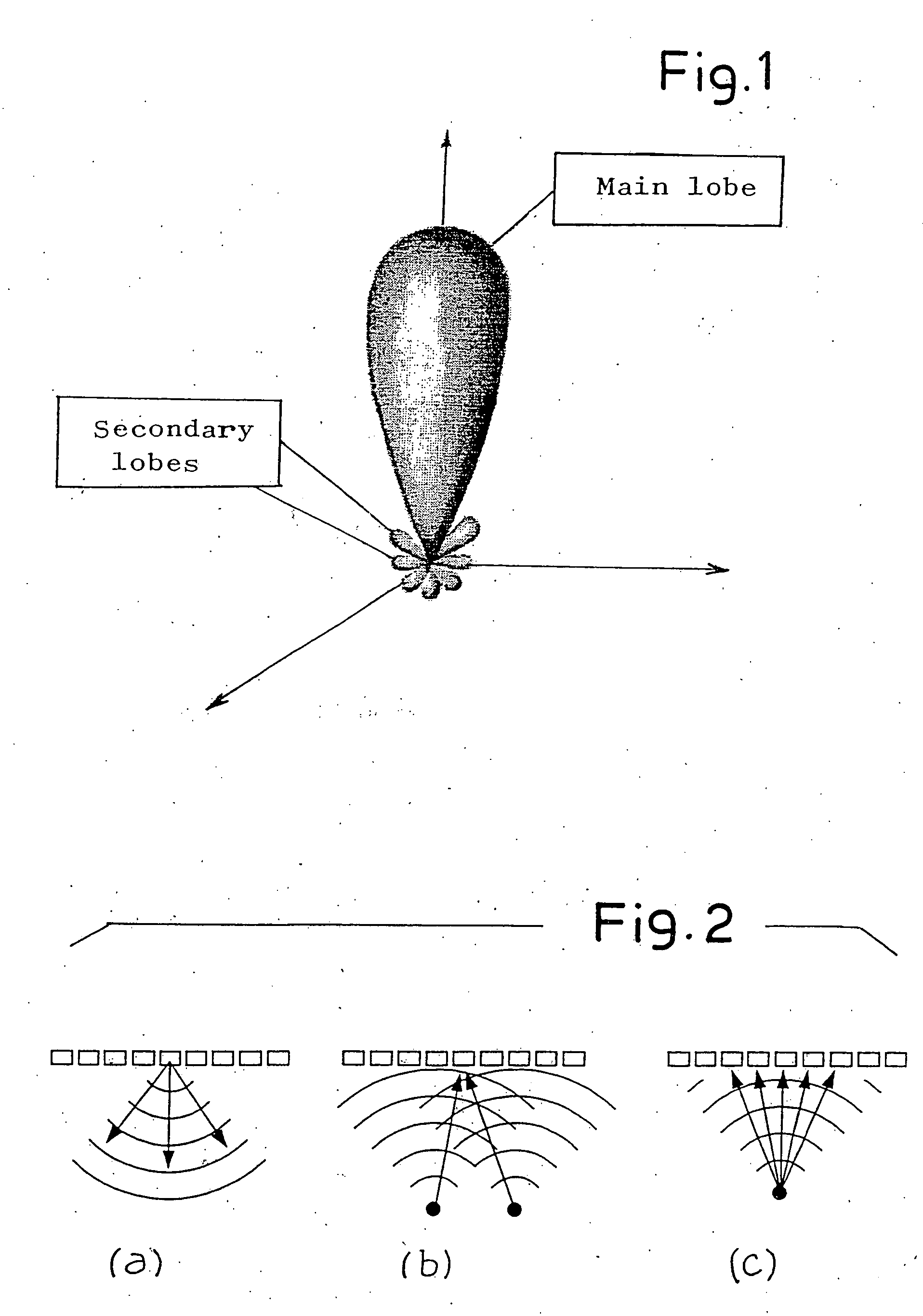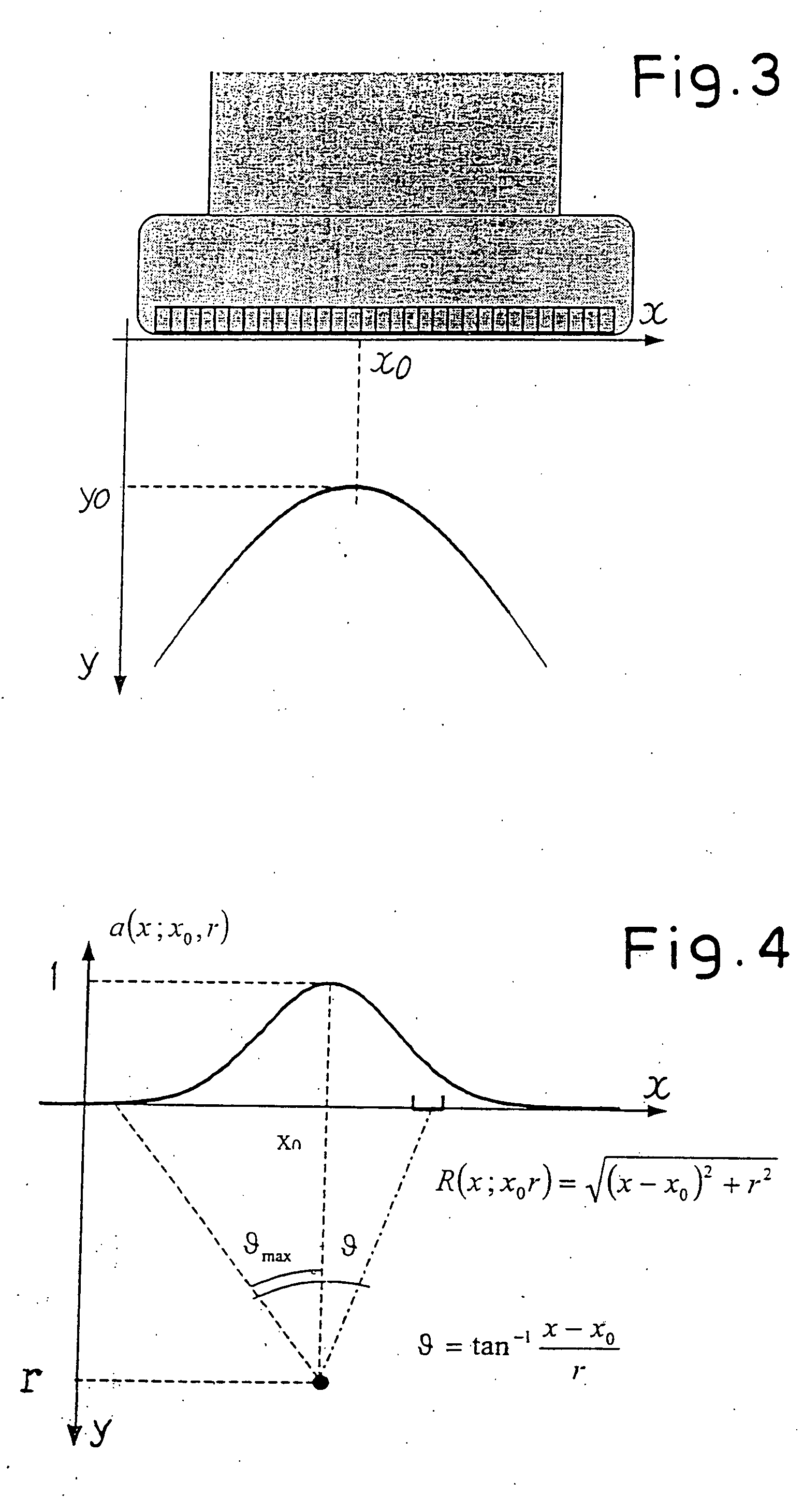Ultrasound image focusing method and relative ultrasound system
a technology of ultrasonic image and relative ultrasound, applied in the field of ultrasonic image focusing method and relative ultrasound system, can solve the problems of affecting the complete image generation of the image, the curve of the delay used in receive focusing varies through, and the image is substantially distorted
- Summary
- Abstract
- Description
- Claims
- Application Information
AI Technical Summary
Benefits of technology
Problems solved by technology
Method used
Image
Examples
Embodiment Construction
[0082] 1. Description of the Processing Method
[0083] FIG. 3 schematically shows an ultrasound probe S with an array of transducers Tr aligned in the x direction, hereinafter also called main direction of the array of transducers. In the method of the present invention the transducers Tr are excited in sequence to emit an ultrasound signal. In the example illustrated here, the signal emitted is frequency modulated, meaning that it is a "chirp" signal. The signal reflected from the reflectors contained in the tissue--or in the body being investigated--for each ultrasonic signal emitted by a single transducer influences a large number of transducers in the array, which perceive it with different amplitudes according to the angle of incidence, although only the electric signal produced by the transducer that transmitted the impulse is used to generate the image.
[0084] The lateral sensitivity of each transducer forming the array has a bell-shaped pattern with a maximum at the level of it...
PUM
 Login to View More
Login to View More Abstract
Description
Claims
Application Information
 Login to View More
Login to View More - R&D
- Intellectual Property
- Life Sciences
- Materials
- Tech Scout
- Unparalleled Data Quality
- Higher Quality Content
- 60% Fewer Hallucinations
Browse by: Latest US Patents, China's latest patents, Technical Efficacy Thesaurus, Application Domain, Technology Topic, Popular Technical Reports.
© 2025 PatSnap. All rights reserved.Legal|Privacy policy|Modern Slavery Act Transparency Statement|Sitemap|About US| Contact US: help@patsnap.com



